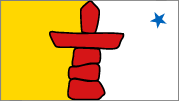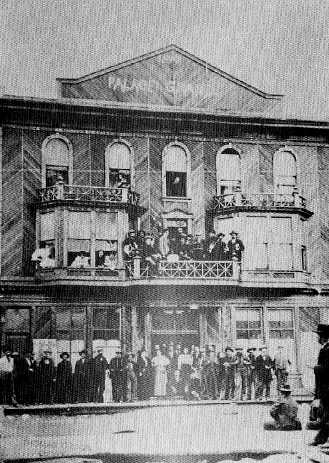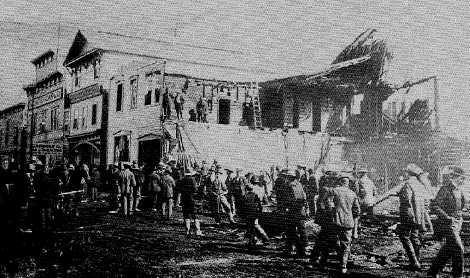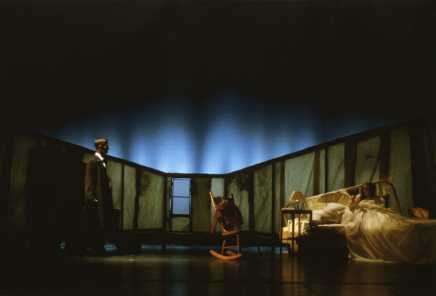Canadian Theatre Encyclopedia
Northern Territories Theatre


This article covers the three territories of Northern Canada: Yukon Territory (pop: 42,152), Northwest Territories (45,161), and Nunavut (39,353). (Statistics Canada, 2020 estimated population)

Although little evidence remains of early Indigenous theatrical practice in the Arctic, in the 19th and early 20th century the Inuit told stories through puppets made of whale-bone, and through ceremonies in which animals were re-enacted. Indigenous theatrical tradition still flourishes in festivals and celebrations such as the drum dance. Insofar as Western theatrical tradition goes, it is likely that the missionaries (particularly the Jesuits) brought theatre with them as did the explorers (in the form of entertainments), and those who were in the territories to exploit the natural resources (hunters, fishermen and whalers, for instance).

The true boom in theatrical and quasi-theatrical (vaudeville, burlesque) activity came with the Gold Rush (the 1890s in Dawson, YT, the 1930s in Yellowknife, NWT). Theatrical growth was explosive in Dawson in 1898 in particular, with the building of the Opera House, the Pavilion, the Monte Carlo, the Mascot, the New Pavilion and the Combination (later called the Tivoli). (It must be noted, though, that explosive may be the right word here as several of the houses burned down in the same year they were built.) The venues presented vaudeville followed by dancing and, occasionally, a prize fight. The Palace Grand Theatre, which opened in 1899, did try to present full-length drama, although in an often coarsened form. In the 1920s, it was converted to a film venue. In the early 1960s, it was restored to its former glory, and produced Robert Emmett Dolan's Foxy (1962), a musical version of Ben Jonson's Volpone. It still functions as a tourist attraction, and mounts summer shows such as The Gaslight Follies.
Alexander Pantages, a Greek immigrant working as a waiter, began operating the Orpheum Theatre in Dawson City at the turn of the century, and developed a North American chain of Pantages theatres for vaudeville productions.

Theatre was kept alive in the schools of the north and by touring companies like the Citadel-on-Wings (1969-1971 and 1977-1984), the outreach program from Edmonton's (Citadel Theatre).
In 1984, the 313-seat Globe Theatre of the Northern Arts was opened in Yellowknife and it has hosted several touring companies from across the lively arts and some local theatre as well.
In the Yukon, the Yukon Arts Council supports artists and organizations and brings the arts into the schools. There are several small theatre companies in Whitehorse including Nakai Theatre and Sour Babes.

In January, 2001, the Women's Experimental Theatre, out of Whitehorse, toured to Vancouver for the High Performance Rodeo; they presented Still Life with Cello.
Readings: Chad Evans. Frontier Theatre. Victoria: Sono Nis Press, 1983.
Source: Patrick B. O'Neill. "Northwest Territories and Yukon", Oxford Companion to Canadian Theatre. Eds. Eugene Benson and L.W. Conolly. Toronto: Oxford UP, 1989.
Profile by Gaetan Charlebois.
Last updated 2021-07-12

